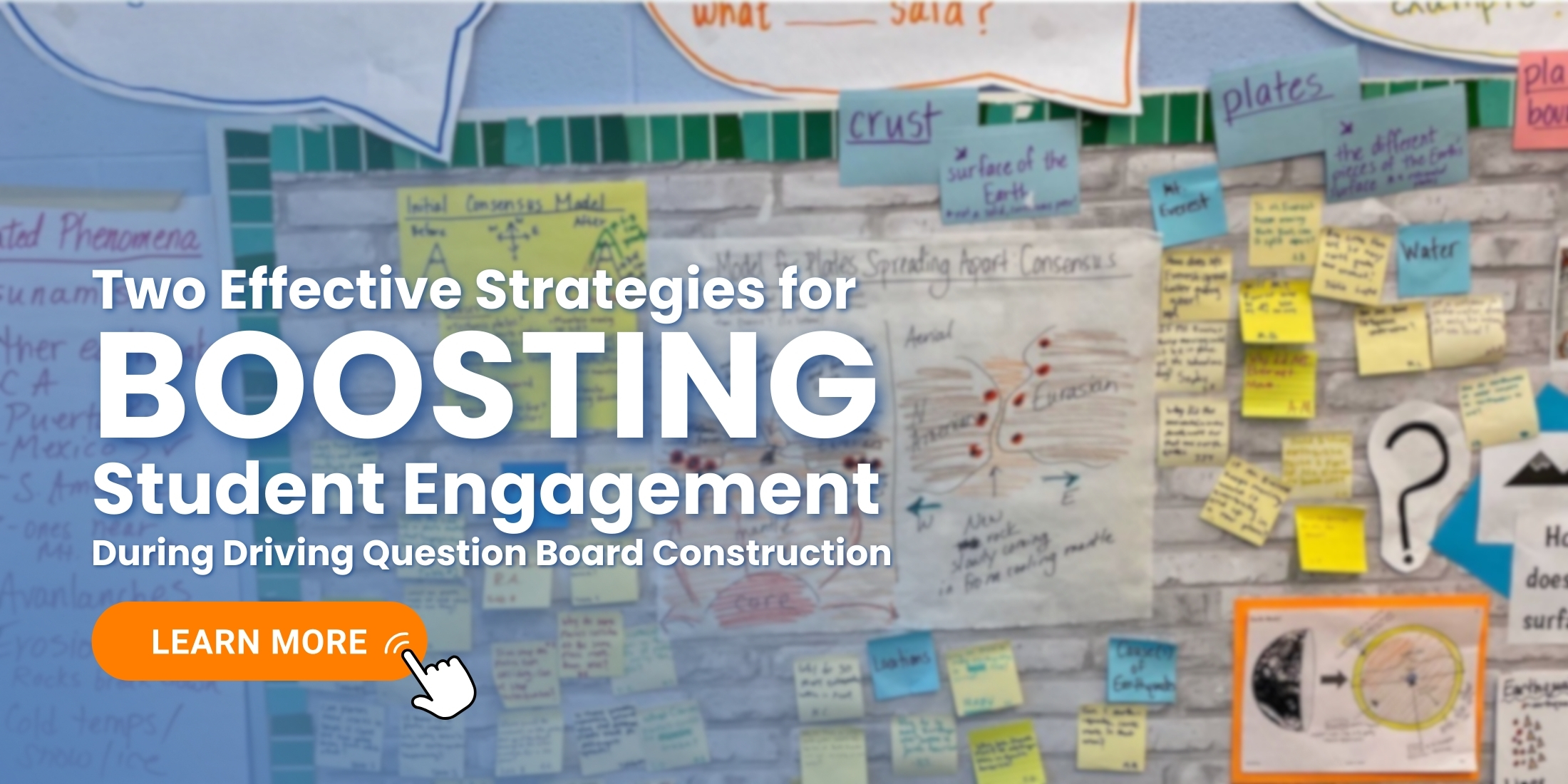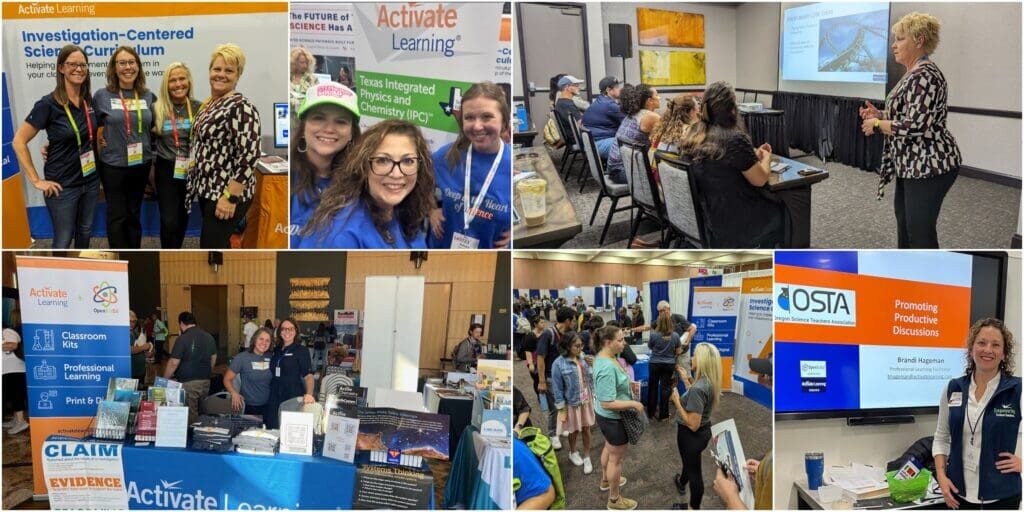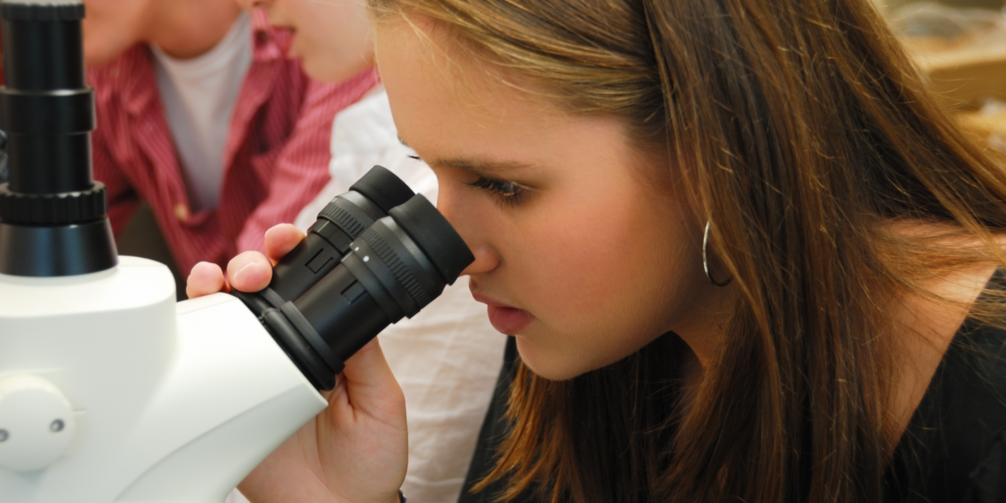Making Sense of Phenomena in OpenSciEd
Making Sense of Phenomena in OpenSciEd

Quick Take: Phenomena are the heart of OpenSciEd’s approach to science instruction. Rather than teaching isolated facts, OpenSciEd uses real-world events or phenomena to anchor student learning in meaningful, engaging contexts. This guide helps educators understand how phenomena are used to drive inquiry, build explanations, and connect science concepts across a unit.
In this blog post, we explore the different types of phenomena featured in OpenSciEd units, including anchoring phenomena, investigative phenomena, and related phenomena. You’ll see how each type plays a crucial role in supporting students as they build, revise, and apply scientific ideas over time.
The Basics: What are Phenomena?
A phenomenon is an observable event that can be explained or predicted using scientific knowledge. In science education, phenomena are used to anchor instruction in real-world contexts, making learning more meaningful and engaging for students. Since phenomena are used to anchor instruction, the chosen phenomenon should be complex enough to require students to engage in multiple scientific practices and apply crosscutting concepts to develop explanations.
In the OpenSciEd curriculum, phenomena are at the heart of student learning. Rather than passively receiving and recalling information, students are invited to wonder, investigate, and explain compelling real-world events. OpenSciEd carefully structures the types of phenomena across a unit to deepen understanding and encourage the transfer of knowledge. Let’s explore the different ways phenomena are used.
How are phenomena used in OpenSciEd units?
Interesting phenomena are key to the OpenSciEd storyline approach. Ultimately, every storyline is a journey to understanding a phenomenon that defies easy explanation. It might be a surprising or puzzling phenomenon, something that violates the rules of the world that students have come to accept, like an object that levitates. It might be a phenomenon that students want to be able to predict and prepare for, like a violent storm. It might be a phenomenon that they want to know how to control, like soil erosion on a farm. Or, it might be an everyday phenomenon that mystifies students when they stop to think about it, like why droplets of water spontaneously appear on the outside of a glass of cold water.
In OpenSciEd units, phenomena are carefully selected to anchor a storyline. These anchoring phenomena are used to draw students into the storyline by drawing them into the natural challenge of explaining something or solving a problem. Other phenomena may be introduced at key points over the course of a storyline to maintain interest or push students to delve more deeply. The OpenSciEd Instructional Model uses an Anchoring Phenomenon Routine at the beginning of every unit to introduce and engage students with the phenomenon. (OpenSciEd Knowledge Base)
Defining the Types of Phenomena
Drawing from OpenSciEd materials and Brett Moulding’s book Teaching Science is Phenomenal, here’s how these key types of phenomena are defined:
Anchoring Phenomenon: The Big, Compelling Event
Every OpenSciEd unit begins with an anchoring phenomenon—an event or set of events that are complex enough to require development of scientific explanations and rich enough to sustain student inquiry over several weeks.
The anchoring phenomenon launches the Anchoring Phenomenon Routine, a process where students experience the phenomenon, generate questions, document initial ideas, and build a shared mission for their learning. Importantly, the anchoring phenomenon is often multifaceted and complex, sparks curiosity, and motivates the need for investigations, allowing students to revisit it with deeper understanding as the unit progresses.
Definition: An anchoring phenomenon is a complex, observable event or series of events that require multiple scientific ideas to explain. It serves as the central focus of an instructional unit, connecting student learning across multiple weeks. These phenomena are complex, often requiring an in-depth understanding of several science ideas and multiple lines of evidence and reasoning to explain fully. Due to their scale, students may only be able to explain certain aspects of an anchoring phenomenon. (Moulding, pg. 23)
In Unit 6.4, the anchoring phenomenon is a dramatic real-world event:
- The unit launches with documentation of a 2015 Himalayan earthquake that shifted Mt. Everest suddenly to the southwest direction. Students also discover that Mt. Everest is steadily moving to the northeast every year and getting taller as well. This puzzling phenomenon prompts questions like:
- How can an earthquake move a mountain?
- What causes earthquakes?
- How do mountains form and change?
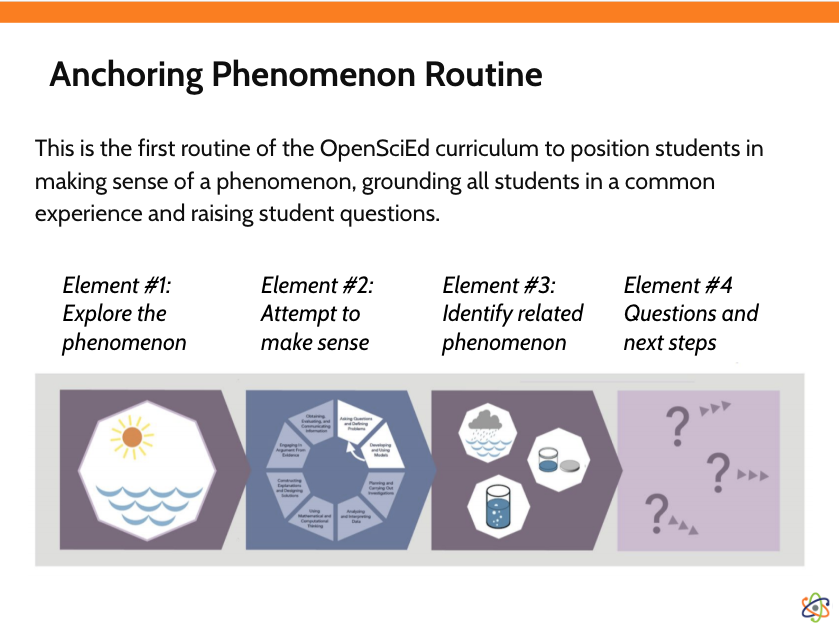
Image: Anchoring Phenomenon Routine slide from OpenSciEd’s Curriculum Launch Professional Learning Materials
Investigative (Lesson-Level) Phenomena: Building Understanding Step-by-Step
As students progress through a unit, they encounter investigative phenomena at the lesson level. These are smaller-scale events or patterns specifically designed to help students answer parts of the bigger questions raised by the anchoring phenomenon.
Each investigative phenomenon is tied to targeted science and engineering practices (SEPs), crosscutting concepts (CCCs), and disciplinary core ideas (DCIs). They provide opportunities for students to engage in meaningful investigations and co-construct knowledge with peers.
Definition: Investigative phenomena are smaller, focused events or patterns that students can directly explore during lessons, providing students with personal experiences of observable events. These phenomena typically require understanding or application of fewer, more connected scientific ideas. By explaining investigative phenomena, students begin to explain aspects of the larger, anchoring phenomenon. Each phenomenon that is investigated by students helps them incrementally build the understanding needed to piece together and eventually explain the anchoring phenomenon. (Moulding, pg. 22)
In Unit 6.4, students explore several investigative phenomena, such as:
- Develop and use models to demonstrate how tectonic plates move and interact at plate boundaries using hands-on materials.
- Analyze patterns of earthquake locations and volcanic activity around the globe using maps to reveal tectonic plate boundaries.
- Investigating the properties and formation of different types of rocks that are below the Earth’s surface.
Each investigation adds a piece to the puzzle, helping students understand rock cycling, plate movement, and mountain formation.
Related Phenomena in the Anchoring Routine and Throughout the Unit
During the initial anchoring routine, OpenSciEd also introduces related phenomena. These examples support students in making early connections between the anchoring phenomenon and their prior experiences. These connections not only prevent students from viewing the anchor as an isolated case, but also prompt them to leverage their prior knowledge, positioning their experiences as valuable tools for making sense of the phenomenon.
Definition: Related phenomena, also described as analogous phenomena, are different but related real-world events used to assess whether students can transfer and apply their understanding beyond the original context of the anchoring phenomenon.
By the end of Unit 6.4, students encounter new situations to explain, such as:
- Explaining the formation of the Himalayas as a result of the Indian and Eurasian plates colliding.
- Modeling rock cycle processes in a local canyon or mountain range.
These transfer tasks ask students to apply their knowledge of plate tectonics, earthquakes, and rock cycling to new examples—demonstrating not just memorization but real scientific reasoning and use of the 3-dimensions.
Integrating Phenomena Throughout the Unit
OpenSciEd's instructional model strategically incorporates these types of phenomena to build a coherent learning progression:
- Anchoring Phenomenon Routine: The unit begins with an engaging phenomenon that elicits student questions and drives the learning journey.
- Investigation Routines: Students conduct investigations and gather data related to investigative phenomena, gradually building their understanding towards the anchor phenomenon.
- Putting the Pieces Together: Students synthesize their findings to explain the anchoring phenomenon.
- Transfer Tasks: Analogous phenomena are introduced in assessments to evaluate students' ability to apply their knowledge in new contexts. Transfer tasks are found in the mid-unit and end-unit performance based assessments.
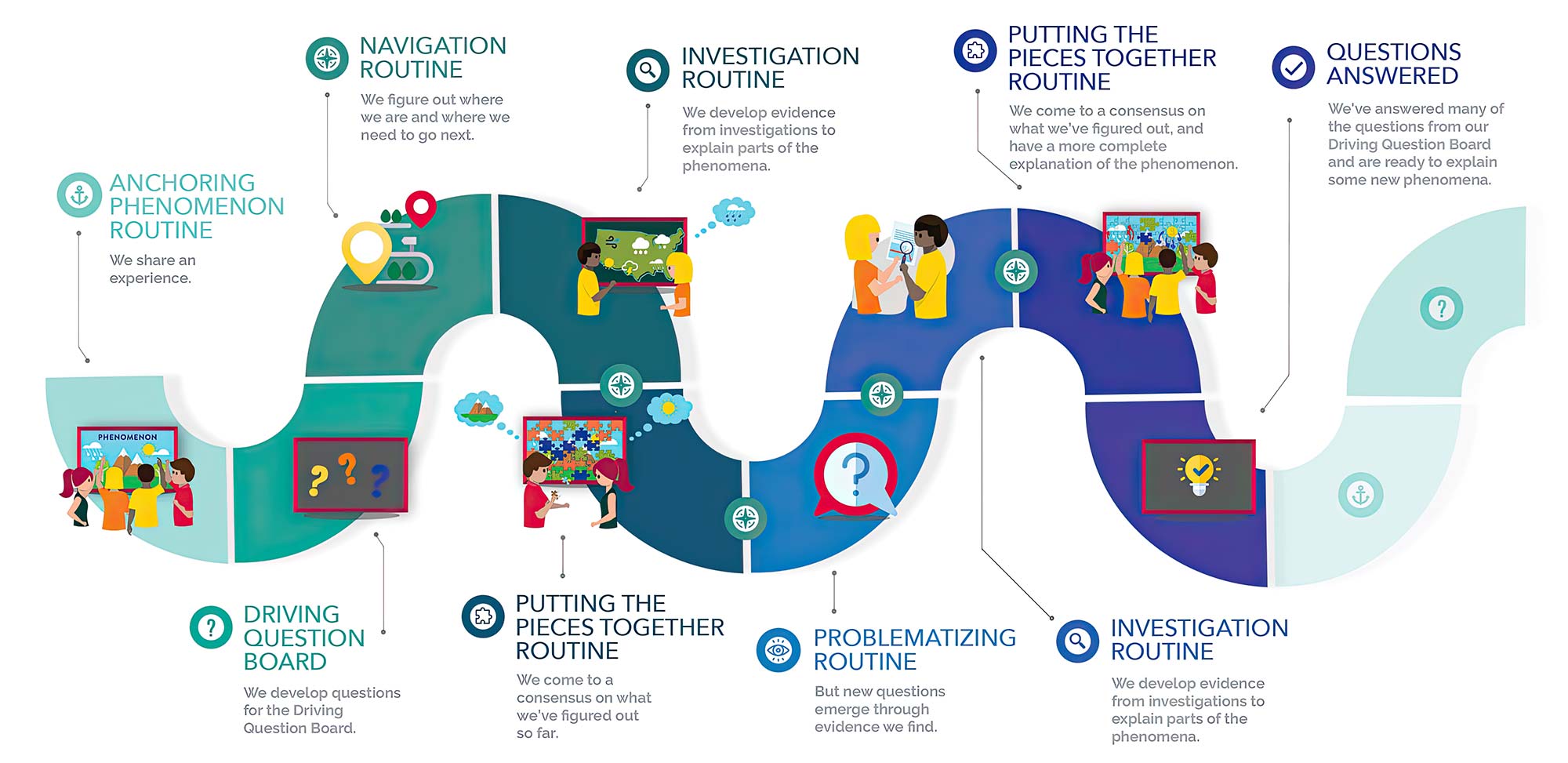
Why This Approach Matters
By designing units with layered integration of the different types of phenomena; anchoring, investigative, and related or analogous, OpenSciEd builds students’ capacity for incrementally building and revising science ideas over time. Students don’t just memorize facts; they use science to explain the world around them, which is the ultimate goal of three-dimensional science learning and the NGSS.
To review the OpenSciEd Instructional Model, click this link: https://openscied.org/why-openscied/instructional-model/
To find out more about why phenomena is important in NGSS-Designed Lessons and Units, review this article from NextGenScience.org:
https://www.nextgenscience.org/sites/default/files/Using%20Phenomena%20in%20NGSS.pdf
To explore qualities of a good anchor phenomenon for a coherent sequence of science lessons, check out STEM Teaching Tool #28: https://stemteachingtools.org/assets/landscapes/STEM-Teaching-Tool-28-Qualities-of-Anchor-Phenomena.pdf
To read more about the different types of phenomenon, explore Brett Moulding’s text “Teaching Science is Phenomenal.”
Ready to Get Started?
The Driving Question Board is more than just a classroom tool; it's a dynamic framework that places student inquiries at the heart of the learning experience. By implementing DQBs thoughtfully, educators can boost student engagement, promote equity, and cultivate a classroom culture where curiosity leads the way. Visit the OpenSciEd Driving Question Board landing page for additional resources, videos, and classroom examples of Driving Question Boards.
About the Author: Rebecca Garelli
Rebecca Garelli has been a professional educator for 19 years, focusing much of her career on teaching middle school math, science, and engineering in both Chicago and Phoenix. She has also been a science education consultant since 2009 and freelance science curriculum writer since 2015. Formerly, she was the Science & STEM Specialist for the Arizona Department of Education from 2019-2023, was a Lead Next Generation Science Standards (NGSS) Instructional Coach for the NGSS Collaborative in Chicago, and Adjunct Faculty member of DePaul University’s STEM Center where she taught graduate-level seminars on the NGSS.
Additionally, Rebecca currently writes NGSS curriculum and assessments for a variety of projects, provides professional learning nationwide as a full-time consultant, and is a member of the OpenSciEd National Facilitator Team. Rebecca is also currently serving a second 3-year term on the National Science Teaching Association (NSTA) Professional Learning in Science Education Committee. Rebecca is also a Professional Learning Facilitator for Activate Learning.
Rebecca earned a B.S. in Elementary Education from DePaul University, an M.Ed. in Science Education from Loyola University Chicago, is a Next Generation Science Exemplar (NGSX) Facilitator, and an Advanced Facilitator Credential from the Waters Center for Systems Thinking.
* * * * * * *

